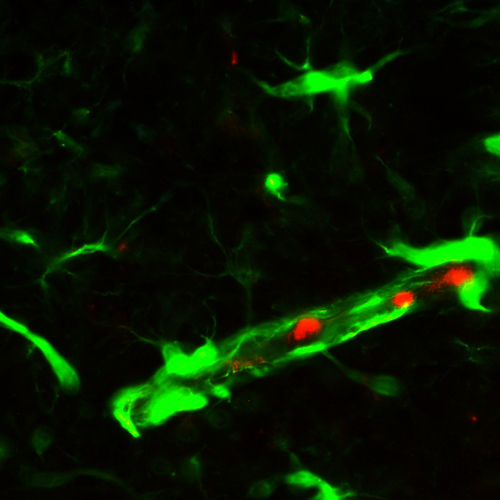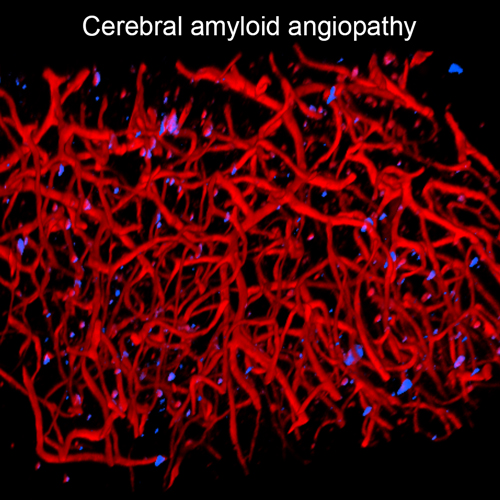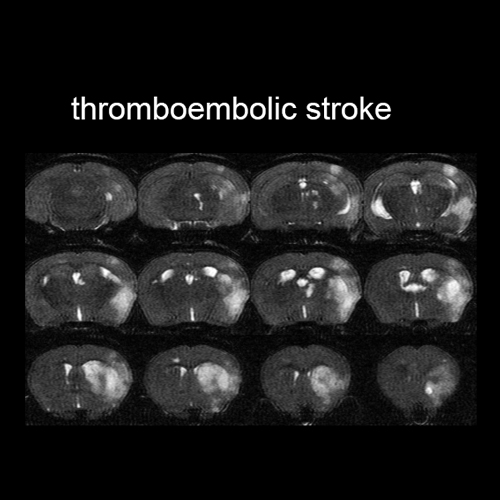

The blood-brain barrier (BBB) is a dynamic fluid membrane posed on the interface between blood and brain and specialized in firm regulation of the exchange of compounds and cells between the two entities. Having the ability to adapt to the needs of the brain and to respond to physiological changes BBB plays a fundamental role in brain homeostasis. BBB is formed by an interdependent network of barrier endowed capillary endothelial cells and perivascular cells, responsible for inducing and maintaining those properties.
The failure of BBB structural integrity and function plays a pivotal role in the pathogenesis of many diseases of the central nervous system (CNS) (i.e. cerebrovascular disease, neuroinflammation, trauma, neoplasia, neurodegenerative diseases) triggering and/or fueling brain dysfunction. This dedicated guardian of the brain’s health may also represent the colossal obstacle for the treatment of brain disease. Drug delivery is a challenge even when the barrier is leaky. Modulating BBB represents a challenge and opportunity to treat many diseases of the nervous system.
Regulation of Blood brain barrier in health and disease: the role of tight junction proteins
BBB is a dynamic and high selective and restrictive barrier positioned on the capillary bed on the interface between blood and brain. The BBB strictly controls the exchanges between the blood and the brain compartments, protects the brain, and maintains brain homeostasis. The brain endothelial tight junction complex is primarily responsible for the barrier function of BBB and is restricting the movement of circulating molecules and blood cells between the blood and the brain.
We are interested in identifying the complexity of the unique structure of Tight junctions, their components as well specific protein-protein interaction in health and in cerebrovascular diseases.

BBB Remodeling in Stroke
Ischemic stroke results in compromised BBB integrity, enhancing its permeability. The magnitude of BBB permeability spanned from BBB breakdown in acute and subacute stroke that lead to vasogenic brain edema to BBB leakage in the chronic phase which fueled progressive BBB dysfunction. Our study is aimed to understand the molecular mechanisms of the brain endothelial tight junction remodeling during the BBB breakdown in acute and subacute stroke, and BBB leakage (chronic stroke condition). We focus on the tight junctional protein dynamics, the complexity of junctional protein-protein interaction, ongoing signaling, and epigenetic processes involved in barrier remodeling. Our goal is to develop a therapeutic strategy to strengthen barriers and prevent the detrimental effect of BBB dysfunction.

BBB in Aging and Cerebral Small Vessels Diseases
Blood-brain barrier (BBB) integrity declines slowly with normal aging and is worse in patients with dementia and cerebral small vessel disease. The increased blood brain barrier (BBB) permeability/leakage is considered a consequence of ongoing processes (i.e. inflammation, atherosclerosis, lack of vaso-autoregulation, or microthrombosis), and a cause of the development of vascular/brain parenchymal injury during aging. The main characteristic of aging microvessels is degeneration affecting the structural and functional properties of blood brain barrier. Our research is focused on the dissection of the structural BBB defects, underlying signaling, and epigenetic mechanisms causing persistent BBB leakage with aging and damage associated with small vessels disease (cerebral amyloid angiopathy). The goal is to develop novel therapeutic modalities for treating the increase of BBB leakiness with aging and emphasize new directions in the treatment of neurodegenerative diseases.

Cerebro Cavernouse Malformation
Cerebral cavernous malformations (CCMs) are brain vascular abnormalities characterized by thin-walled vascular cavities that may rupture and progress to hemorrhage. Microvascular hyperpermeability is one of the hallmarks of lesion progression in CCMs and it is closely associated with hemorrhagic stroke occurrence. This project is primarily focused on elucidating the role of the BBB defect, specifically the defect of brain endothelial TJ complex, as a potential “second hit” mechanism in developing CCM lesions. We are interested in dissecting the molecular mechanism triggered by a mutation in PDCD10 (CCM3) regulating junction complex instability and brain endothelial barrier permeability during persistent small vascular leakage in CCM lesion and hemorrhagic transformation. Our goal is to develop a new pharmacological strategy for regulating the CCM3 as well as other CCM lesion leakage.

Neuroinflammation and Stroke
The successful treatment of acute stroke remains one of the major challenges in clinical medicine. Over the last decades, understanding of stroke pathophysiology has greatly improved, but the therapeutic options for stroke remain still very limited. Our study is focused on elucidating the detrimental effect of inflammation on stroke recovery and is centered around the identification of the profile of endothelial adhesion molecules essential for leukocytes' guidance to the brain in inflammatory response after stroke. Of our particular interest is Junctional adhesion-A protein which has a dual role as building protein for tight junction complex and as an adhesion molecule, regulation of leukocytes recruitment in the brain, platelet brain endothelial cells interaction triggering the local inflammatory response and BBB impairment in stroke.
 ON THE COVER
ON THE COVER
Breast team reviewing a patient's slide. (From left to right) Ghassan Allo, Fellow; Laura Walters, Clinical Lecturer; Celina Kleer, Professor. See Article 2014Department Chair |

newsletter
INSIDE PATHOLOGYAbout Our NewsletterInside Pathology is an newsletter published by the Chairman's Office to bring news and updates from inside the department's research and to become familiar with those leading it. It is our hope that those who read it will enjoy hearing about those new and familiar, and perhaps help in furthering our research. CONTENTS
|
 ON THE COVER
ON THE COVER
Autopsy Technician draws blood while working in the Wayne County morgue. See Article 2016Department Chair |

newsletter
INSIDE PATHOLOGYAbout Our NewsletterInside Pathology is an newsletter published by the Chairman's Office to bring news and updates from inside the department's research and to become familiar with those leading it. It is our hope that those who read it will enjoy hearing about those new and familiar, and perhaps help in furthering our research. CONTENTS
|
 ON THE COVER
ON THE COVER
Dr. Sriram Venneti, MD, PhD and Postdoctoral Fellow, Chan Chung, PhD investigate pediatric brain cancer. See Article 2017Department Chair |

newsletter
INSIDE PATHOLOGYAbout Our NewsletterInside Pathology is an newsletter published by the Chairman's Office to bring news and updates from inside the department's research and to become familiar with those leading it. It is our hope that those who read it will enjoy hearing about those new and familiar, and perhaps help in furthering our research. CONTENTS
|
 ON THE COVER
ON THE COVER
Director of the Neuropathology Fellowship, Dr. Sandra Camelo-Piragua serves on the Patient and Family Advisory Council. 2018Department Chair |

newsletter
INSIDE PATHOLOGYAbout Our NewsletterInside Pathology is an newsletter published by the Chairman's Office to bring news and updates from inside the department's research and to become familiar with those leading it. It is our hope that those who read it will enjoy hearing about those new and familiar, and perhaps help in furthering our research. CONTENTS
|
 ON THE COVER
ON THE COVER
Residents Ashley Bradt (left) and William Perry work at a multi-headed scope in our new facility. 2019Department Chair |

newsletter
INSIDE PATHOLOGYAbout Our NewsletterInside Pathology is an newsletter published by the Chairman's Office to bring news and updates from inside the department's research and to become familiar with those leading it. It is our hope that those who read it will enjoy hearing about those new and familiar, and perhaps help in furthering our research. CONTENTS
|
 ON THE COVER
ON THE COVER
Dr. Kristine Konopka (right) instructing residents while using a multi-headed microscope. 2020Department Chair |

newsletter
INSIDE PATHOLOGYAbout Our NewsletterInside Pathology is an newsletter published by the Chairman's Office to bring news and updates from inside the department's research and to become familiar with those leading it. It is our hope that those who read it will enjoy hearing about those new and familiar, and perhaps help in furthering our research. CONTENTS
|
 ON THE COVER
ON THE COVER
Patient specimens poised for COVID-19 PCR testing. 2021Department Chair |

newsletter
INSIDE PATHOLOGYAbout Our NewsletterInside Pathology is an newsletter published by the Chairman's Office to bring news and updates from inside the department's research and to become familiar with those leading it. It is our hope that those who read it will enjoy hearing about those new and familiar, and perhaps help in furthering our research. CONTENTS
|
 ON THE COVER
ON THE COVER
Dr. Pantanowitz demonstrates using machine learning in analyzing slides. 2022Department Chair |

newsletter
INSIDE PATHOLOGYAbout Our NewsletterInside Pathology is an newsletter published by the Chairman's Office to bring news and updates from inside the department's research and to become familiar with those leading it. It is our hope that those who read it will enjoy hearing about those new and familiar, and perhaps help in furthering our research. CONTENTS
|
 ON THE COVER
ON THE COVER
(Left to Right) Drs. Angela Wu, Laura Lamps, and Maria Westerhoff. 2023Department Chair |

newsletter
INSIDE PATHOLOGYAbout Our NewsletterInside Pathology is an newsletter published by the Chairman's Office to bring news and updates from inside the department's research and to become familiar with those leading it. It is our hope that those who read it will enjoy hearing about those new and familiar, and perhaps help in furthering our research. CONTENTS
|
 ON THE COVER
ON THE COVER
Illustration representing the various machines and processing used within our labs. 2024Department Chair |

newsletter
INSIDE PATHOLOGYAbout Our NewsletterInside Pathology is an newsletter published by the Chairman's Office to bring news and updates from inside the department's research and to become familiar with those leading it. It is our hope that those who read it will enjoy hearing about those new and familiar, and perhaps help in furthering our research. CONTENTS
|

MLabs, established in 1985, functions as a portal to provide pathologists, hospitals. and other reference laboratories access to the faculty, staff and laboratories of the University of Michigan Health System’s Department of Pathology. MLabs is a recognized leader for advanced molecular diagnostic testing, helpful consultants and exceptional customer service.